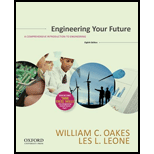
The pros and cons of the NAFTA based on the research articles are discussed.
Answer to Problem 4.1EAA
The pros are that they protect the copyrights and patents legally for the countries in agreement making the market access also easy for them. The cons are such that it creates cheap labor which made many US people lose their jobs.
Explanation of Solution
Given:
The NAFTA which is known as the North American Free Trade Agreement forms the biggest trade free agreement between the countries like Canada, Mexico, and the United states.
The North American free trade agreement is a treaty that is been signed by Canada, Mexico and the United State. The purpose of NAFTA is to eradicate the most tariffs on trade between these countries that have signed the agreement to improve its economic condition. This NAFTA has influenced the engineering professions globally.
There are few pros and cons of the NAFTA. It was created to have low tariffs between the countries and it increased the economic state by the free trade. It ranks the second largest free trade market in the world. They have majorly impacted the large and small corporate companies of the member countries. The NAFTA allows the countries in agreement to have trade with the member countries easier and tariff free, which means goods can move easily with levying any extra tariff on it. The market access becomes easy for the trading countries and it gives a wider range of mobility for the professionals and the business people. The agreement helps to protect the copyrights and patents legally. The tariffs are remerged if there is a surgical strike on the domestic industry.
The cons of NAFTA may be such that it would make the manufacturing jobs move to labour markets that are cheap. This may lead to unemployment, inflation, and also it may relocate the facilities of the new production. The Central America and Asia locales have got jobs as the labors are cheap that makes the people of US lose jobs.
Conclusion:
There are many pros and cons of the NAFTA which has an impact on small and big corporates protecting the patents and copyrights legally and cons are that it creates an unemployment problem because of cheap labour.
Want to see more full solutions like this?
Chapter 4 Solutions
Engineering Your Future: Comprehensive
- PROBLEM 3.46 The solid cylindrical rod BC of length L = 600 mm is attached to the rigid lever AB of length a = 380 mm and to the support at C. When a 500 N force P is applied at A, design specifications require that the displacement of A not exceed 25 mm when a 500 N force P is applied at A For the material indicated determine the required diameter of the rod. Aluminium: Tall = 65 MPa, G = 27 GPa. Aarrow_forwardFind the equivalent mass of the rocker arm assembly with respect to the x coordinate. k₁ mi m2 k₁arrow_forward2. Figure below shows a U-tube manometer open at both ends and containing a column of liquid mercury of length l and specific weight y. Considering a small displacement x of the manometer meniscus from its equilibrium position (or datum), determine the equivalent spring constant associated with the restoring force. Datum Area, Aarrow_forward
- 1. The consequences of a head-on collision of two automobiles can be studied by considering the impact of the automobile on a barrier, as shown in figure below. Construct a mathematical model (i.e., draw the diagram) by considering the masses of the automobile body, engine, transmission, and suspension and the elasticity of the bumpers, radiator, sheet metal body, driveline, and engine mounts.arrow_forward3.) 15.40 – Collar B moves up at constant velocity vB = 1.5 m/s. Rod AB has length = 1.2 m. The incline is at angle = 25°. Compute an expression for the angular velocity of rod AB, ė and the velocity of end A of the rod (✓✓) as a function of v₂,1,0,0. Then compute numerical answers for ȧ & y_ with 0 = 50°.arrow_forward2.) 15.12 The assembly shown consists of the straight rod ABC which passes through and is welded to the grectangular plate DEFH. The assembly rotates about the axis AC with a constant angular velocity of 9 rad/s. Knowing that the motion when viewed from C is counterclockwise, determine the velocity and acceleration of corner F.arrow_forward
 Elements Of ElectromagneticsMechanical EngineeringISBN:9780190698614Author:Sadiku, Matthew N. O.Publisher:Oxford University Press
Elements Of ElectromagneticsMechanical EngineeringISBN:9780190698614Author:Sadiku, Matthew N. O.Publisher:Oxford University Press Mechanics of Materials (10th Edition)Mechanical EngineeringISBN:9780134319650Author:Russell C. HibbelerPublisher:PEARSON
Mechanics of Materials (10th Edition)Mechanical EngineeringISBN:9780134319650Author:Russell C. HibbelerPublisher:PEARSON Thermodynamics: An Engineering ApproachMechanical EngineeringISBN:9781259822674Author:Yunus A. Cengel Dr., Michael A. BolesPublisher:McGraw-Hill Education
Thermodynamics: An Engineering ApproachMechanical EngineeringISBN:9781259822674Author:Yunus A. Cengel Dr., Michael A. BolesPublisher:McGraw-Hill Education Control Systems EngineeringMechanical EngineeringISBN:9781118170519Author:Norman S. NisePublisher:WILEY
Control Systems EngineeringMechanical EngineeringISBN:9781118170519Author:Norman S. NisePublisher:WILEY Mechanics of Materials (MindTap Course List)Mechanical EngineeringISBN:9781337093347Author:Barry J. Goodno, James M. GerePublisher:Cengage Learning
Mechanics of Materials (MindTap Course List)Mechanical EngineeringISBN:9781337093347Author:Barry J. Goodno, James M. GerePublisher:Cengage Learning Engineering Mechanics: StaticsMechanical EngineeringISBN:9781118807330Author:James L. Meriam, L. G. Kraige, J. N. BoltonPublisher:WILEY
Engineering Mechanics: StaticsMechanical EngineeringISBN:9781118807330Author:James L. Meriam, L. G. Kraige, J. N. BoltonPublisher:WILEY





